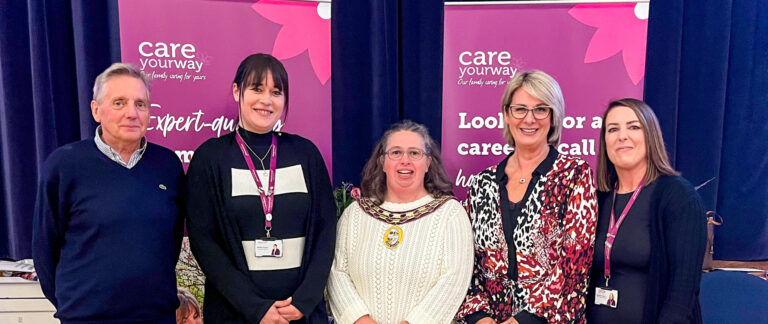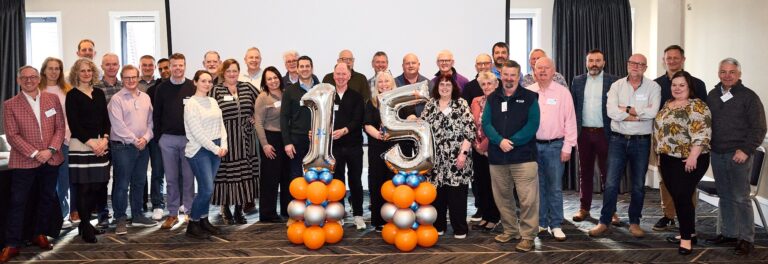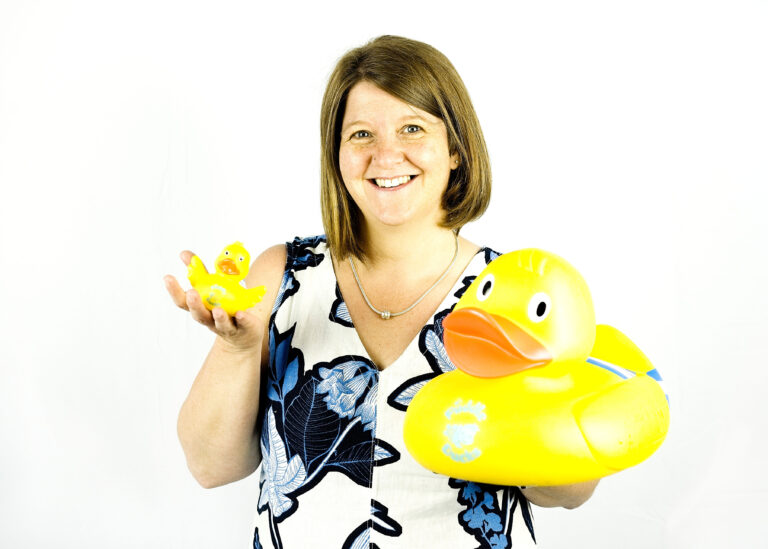Franchisee Network spotlight interview: Farhat Abbas
Like many franchisees, Farhat Abbas’ journey into franchising started with a desire to be his own boss and take control of his family’s financial future.
Over the last 15 years, his career in franchising has seen him build up and sell on a portfolio of 13 Subway units, follow by a multi-unit operation with EE – all while developing a private property development business.
Having recently sold his EE stores, he spoke to The Franchisee Network about using franchising as a wealth management strategy while he searches for his next investment.
What was your first introduction to franchising?
In 2005, having been on the corporate ladder for quite a few years, I decided it was time to be my own boss and started to explore different opportunities. I did a lot of research before I invested. Back then, there weren’t as many franchise opportunities available in the UK and it was important to me to find a brand whose values had synergy with my own.
Why Subway?
Subway was really beginning to take off in the UK and they were pioneers in that they were operating an 100% franchise model. There were a number of stores up and running, but they were nowhere near saturation point so I could see lots of opportunity with the brand. They demanded a relatively low up-front fee and their healthy credentials really sealed the deal for me.
Did you enter into franchising with multi-unit ownership in mind?
I actually didn’t really know what I was getting into! I handed in my resignation to my boss and he tried to persuade me to stay on but I didn’t feel like I could give the role the attention it deserved any more. I had bought the franchise, I’d done the training and – in my mind – I was ready to go. Unfortunately, finding the right location took a little longer than I had hoped.
I went to endless meetings all over London looking for the perfect spot. I was living in West London at the time, and out of sheer desperation I went all the way to East London to look at an prospective site near a fruit & veg market but it just wasn’t quite right. On my way home, I walked through a shopping centre and saw an empty unit on the second floor. I decided to try my luck and went to speak to the centre’s general manager who agreed that Subway would be a good fit and, out of coincidence, I found my first store.
Interestingly, at that point Subway didn’t think East London was ready for a store yet and they weren’t too sure about shopping centre locations. However, the beauty of our franchise partnership was that there was still a degree of flexibility. We opened the store, and at one point had the highest sales in Europe!
That unit became a springboard for me. Had it not been for the right location and the right brand, my whole franchise journey could have ended right there. Was it fate? Perhaps. Was it sheer tenacity and not taking no for an answer? It certainly helped!
How was the transition from employee to franchisee?
I came from a corporate background, where I had become accustomed to first-class flights, company cars, a company card and, perhaps most importantly, a guaranteed wage, so psychologically the transition was a challenge.
There was certainly an element of fear … what if it didn’t work out? But a little bit of fear is good for you and it generates positive energy. It makes you do more research, more marketing – just more!
Overnight, I was behind a till in a branded uniform and for the first three weeks every morning I questioned whether anyone would come for lunch. It was certainly a humbling experience but the freedom to drive your own success is just unbelievable.
So, if you can overcome those first mental obstacles then the rewards are far greater than anything a 5-star hotel on a company credit card can offer.
How did the business develop?
I was lucky in that right from the beginning I had a really good team in place. Within a matter of days, I realised that I wasn’t particularly efficient at counting the cash as I would get distracted. One of my team offered to do it for me and, as she didn’t have any emotional attachment to the money side of the business, she was able to do it much quicker.
Psychologically it was a big step handing over control of the cash, but that day I learnt one of the most important lessons as a business owner. The only way you can grow, is to let go of certain elements of the business to the right people. I realised that day that there are people out there who will be able to do some things much better than me, and that really my job was to identify who they are.
Within 3 to 4 months, that same team member had almost made me surplus to requirements in my own store. I just wasn’t needed day-in, day-out to get involved in the nitty-gritty of the business, which enabled me to start thinking about my next location.
I read somewhere that you should open your second store within a 30-minute drive of your first, so that you can get to both every day without driving too far, so I started my search. Within 10 months of opening my first unit I’d identified my second location, and in a couple of months our Leytonstone branch opened its doors.
Was this also in a shopping centre?
It was on the high street, right opposite the tube station. I did a recce of the location, sat in a café down the road drinking a coffee and realised that while the high street wasn’t particularly busy, every 15 minutes or so 150 people would enter or emerge from the station – all of whom were potential customers.
I knew this would really impact the dynamic. In our first location, there was a fairly high dwell time, with customers sitting down to enjoy their meal. In this new store they’d be looking for a much more ‘grab-and-go’ experience, so the key to our success was going to be speed.
Your portfolio grew rapidly from that point – did you have a particular strategy in place?
We opened a new store roughly every 6 months until we reached 13 units, primarily in retail parks. Then an opportunity came up to open in the ExCel exhibition centre. Now this was right in the middle of the financial crash and events were being cancelled left, right and centre so it was a risk. On the plus side, I would be in a large events venue. On the downside, the number of potential customers was decreasing – I decided to take a punt.
Again, perhaps a stroke of luck, but shortly afterwards the Abu Dhabi government bought ExCel and gained planning permission to double its size. I went from being positioned down the end of the main concourse in a dark corner, to right in the middle. The first year and a half was tough but, as the economy improved and events returned to the venue, things turned around. Soon we were selling more in a day at that location than we would in two weeks at some of my other stores.
We just couldn’t keep up, so for the first time in its history Subway considered selling pre-made sandwiches to try and meet demand. Operationally, it was a real challenge and we learnt a lot, but I was exhausted. New franchisees joining the business often came to do some training with us and when one of them offered to buy a store off me it just came at the right time. For a while, I went through a stage of selling a store and opening a store but then I decided it was time for a new challenge.
Were you looking for anything in particular?
I wanted to progress as a person. I felt like I had achieved a lot as a multi-unit franchisee, so multi-brand seemed like a logical next step. EE were looking for franchise partners, but it was a very different animal to Subway in the sense that it had a huge estate, but not many franchised stores.
During my time with Subway, I had been chairman of their advertising board so I was actively involved in the development of the brand, which I really enjoyed. Any great franchisor will sit with franchisees, listen to their feedback and work collaboratively to improve systems and I was keen to take this experience to EE as a member of their franchise committee.
I started with three previously company-owned stores outside of London which signalled the beginning of a real period of transition for me, both professionally and personally. From a professional perspective, I was in these new stores three days a week adapting to the dynamic and putting the systems in place to drive long-term growth. I soon realised that as long as I had the right training and development in place, and the incentive package was competitive, a self-motivated team could push the business forward. Once I had the formula nailed, I went on to open two additional branches from scratch, and converted a Phones4U shop when they went bust – so within three years I had six EE stores.
It was a period of constant change and I really leant on some of those very early lessons I learnt as a franchisee – that you have to be able to adapt to change and you have to learn when to let go. If you approach business with that in mind, reacting and ultimately profiting from change becomes much easier.
However, there reached a point where I was in Winchester, my son was in London and my wife was in Abu Dhabi which definitely wasn’t in the original plan! Alongside franchising, I had also built up a property development business to utilise any excess capital, so when the opportunity to sell on my EE units came up, it felt like the right time and I knew I wouldn’t be bored as I could focus on maximising the output from our property portfolio.
Having said that I’ve definitely got the franchising bug, so I decided to attend The British & International Franchise Exhibition at Olympia to see what’s out there.
How do you think franchising has changed?
It’s amazing how the whole landscape has changed since I started. My experience with EE taught me that it doesn’t all have to be about food. There are retail brands out there who are really using the changing high street to their advantage by recognising those products that generate an emotional response or have complex technical requirements. Creating an experience – whether we are talking about retail, food, leisure activities….you name it – is going to be the key difference between franchise brands that survive, and franchise brands that thrive.
Vodafone and Papa John’s are both great examples of franchise brands that know how to ‘let go and grow.’ Over the past year, I’ve been impressed with how they have offered select, talented franchise partners the opportunity to rapidly expand to multi-unit ownership. These franchisees are then implementing high-impact performance plans which deliver great results – a real win-win for both the franchisor and franchisee!
———————–

What is The Franchisee Network?
The Franchisee Network is a new initiative designed to help existing franchisees build connections with other business-owners from a diverse mix of franchise brands. It will allow you to learn from and collaborate with like-minded entrepreneurs as you navigate the challenges of running your own business. Find out more about joining The Franchisee Network here.



